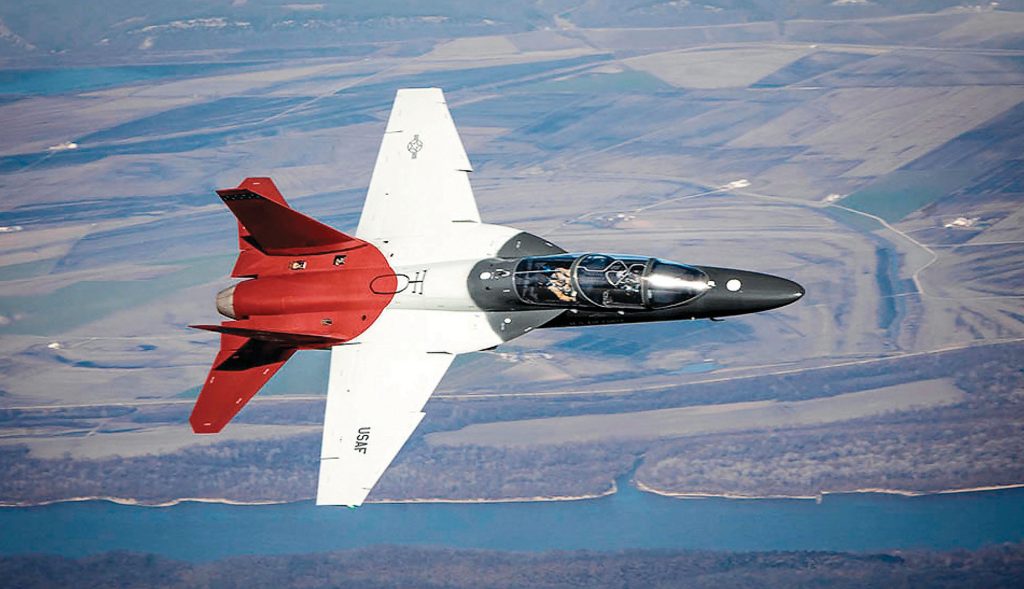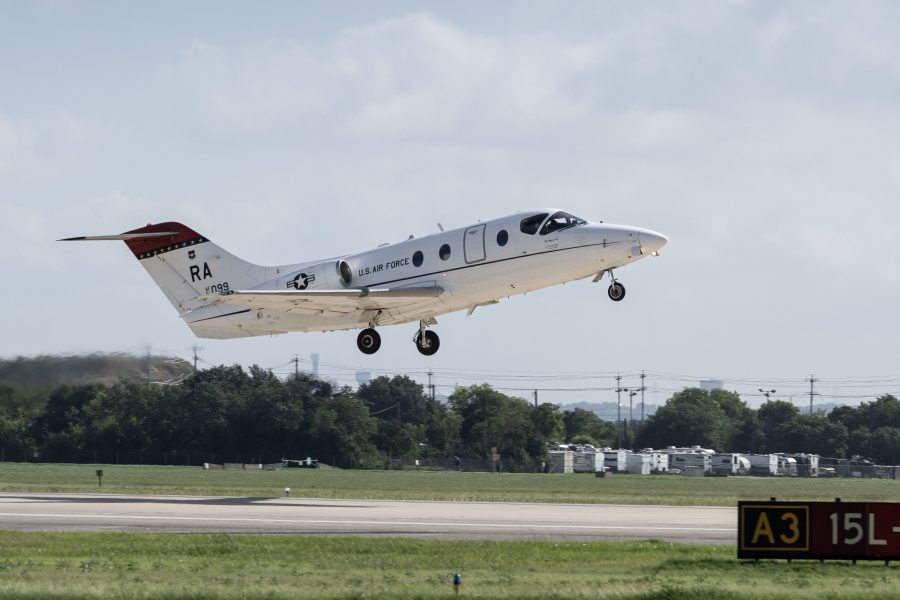The last remaining T-1 Jayhawk at Joint Base San Antonio-Randolph, Texas, took its final flight to the “Boneyard” at Davis-Monthan Air Force Base, Ariz., earlier this month.
With the complete phase-out of the aging trainers at the 99th Flying Training Squadron, the unit is now first in line to receive the advanced T-7 trainer in the years ahead.
“It was an honor to be a part of the final Red Tail T-1 flight,” said Lt. Col. Dominique Haig, 99th Flying Training Squadron commander, who piloted the flight with Lt. Cols. Megan Pasierb and Christopher Puccia of the 39th Flying Training Squadron.
The 99th FTS, the sole unit to have operated the Jayhawks at the Texas base, had their T-1 aircraft tails painted red, in honor of the Tuskegee Airmen of World War II, famously known as the “Red Tails.” Since the 1990s, the T-1s have been used to train pilots for cargo and tanker aircraft like the C-17 and KC-135, as well as to support navigator training for the Air Force, Navy, Marine Corps, and international services.
“They’ve been a workhorse for the past 31 years, preparing the instructor pilots and combat systems operators for the Mobility Air Force, Air Force Special Operations Command, and Air Combat Command,” added Haig.
The Air Force has been pushing to retire its T-1 fleet, but Congress has previously barred the service from phasing out an additional 52 T-1s in fiscal 2024 until “full, fleet-wide implementation” of the new Undergraduate Pilot Training curriculum was in place. In April, Air Force Secretary Frank Kendall sent letters to lawmakers certifying the completion of the new UPT program. The service now expects to divest the entire Jayhawk fleet by fiscal 2026, with 22 T-1s scheduled to retire during FY25. The majority of this number will be from the 12th Flying Training Wing.
“The 12th FTW continues to fly the T-1A for Combat System Operator training at Naval Air Station Pensacola, Fla., until their aircraft are divested in FY 2025,” Sean Worrell, spokesperson for the 12th Flying Training Wing, told Air & Space Forces Magazine.
 Air Education and Training Command’s new T-7A trainer will be critical to preparing new pilots for the operational training that follows at Air Combat Command. Boeing photo.
Air Education and Training Command’s new T-7A trainer will be critical to preparing new pilots for the operational training that follows at Air Combat Command. Boeing photo.The service is currently in the process of acquiring the T-7 Red Hawk, originally designed to take over from the T-38 Talon as the go-to trainer for fighter and bomber pilots. According to the 2025 budget request, the Air Force is proposing to purchase seven T-7s in 2025, with a total buy of 346. Worrell explained the T-7s will also be used to train cargo and tanker pilots.
“The T-7A Red Hawk beddown is currently projected for [fiscal 2026], and the 99th Flying Training Squadron is set to be the first unit in the Air Force to receive the aircraft,” said Worrell.
The squadron has already received its initial group of T-7 instructors and “is building the training syllabus for when the aircraft arrives at JBSA-Randolph in [2026],” according to Worrell. The unit is renovating buildings across the base to support the new program.
“While we are closing one chapter in Air Force pilot training, we are gearing up for the next,” said Haig. “It’s a heavy lift to stand up a new Mission Design Series.”
Until the T-7 training program is up and running at Randolph, the unit will continue to train student pilots using both the T-6 Texan and simulators. Worrell noted that this unique program takes four months to prepare a pilot for flying airlift aircraft or tankers—the same duration as training with the T-1 aircraft.
“Modern simulators are sufficient in allowing the Air Force to provide multiple practice repetitions for students in a cost-effective manner, and introducing scenarios to students that would be impractical or unsafe to practice in an actual aircraft,” added Worrell.
The Air Force has said it wants to use the money that would be spent on extending the aging T-1’s service life and operating it to advancing its simulators, which will also allow the service to rely more on contract instructors rather than uniformed pilots, thus saving more rated slots for the operational force.


